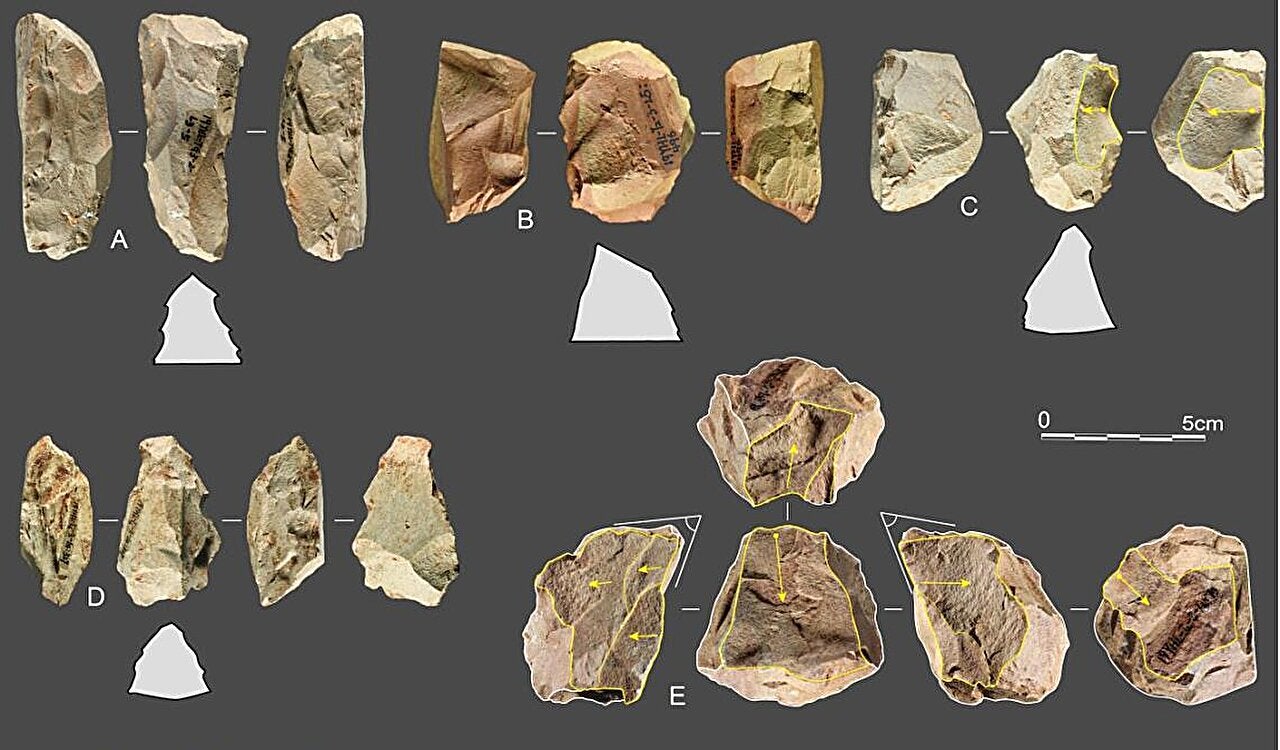Archaeologists in China have found stone technology previously thought to have been used by Neanderthals in Europe, challenging our understanding of human evolution in East Asia.
The Quina method of making stone tools had previously been found in Europe but never in East Asia.
The Middle Stone Age, a crucial time in human evolution between 300,000 and 30,000 years ago, is usually believed to have been a dynamic period of progress in Europe and Africa, but rather static in East Asia without much development among the early human ancestor populations living there.
The Middle Stone Age is also linked to the origin and evolution of the modern human species, Homo sapiens, in Africa as well as the development of archaic human groups like Neanderthals and Denisovans.
Now, though, scientists have found the Quina technology at an archaeological site in southwestern China dated to between 50,000 and 60,000 years ago, challenging this assumption.
“This is a big upset to the way we think about that part of the world in that period of time,” said Ben Marwick, a co-author of the study from the University of Washington.
“It really raises the question of, what else were people doing during this period that we haven’t found yet?”

Researchers discovered a Quina stone scraper, thick and asymmetrical with a broad and sharp working edge showing clear signs of use and resharpening, as well as byproducts of its use. These tools, scientists said, were likely used for scraping and scratching bones, antlers or wood.
Archaeologists are perplexed how tools known to have been used by Neanderthals in Europe arrived in East Asia. They are unsure if the technology was introduced in the region by people coming from the west or if it was independently developed with no direct contact between groups.
“We can try to see if they were doing something similar beforehand that Quina seemed to evolve out of,” Dr Marwick said.
“Then we might say that development seems to be more local – they were experimenting with different forms in previous generations, and they finally perfected it.”
Alternatively, if the Chinese tools appeared without any experimentation compared to those discovered in Europe and Africa, it could imply the technology was transmitted by another group.
“The idea that nothing has changed for such a long time in East Asia also has a tight grip on people,” Dr Marwick said. “They haven’t been considering the possibility of finding things that challenge that. Now maybe there are some scholars who are interested in questioning those ideas.”
Researchers say uncovering more ancient human remains in the area may help solve the puzzle.
“There have never been any Neanderthals found in East Asia, but could we find a Neanderthal? Or, more likely, could we find a Denisovan, which is another kind of human ancestor?” Dr Marwick said. “If we can find the human remains associated with this period, we might find something surprising — maybe even a new human ancestor that we don’t know about yet.”











